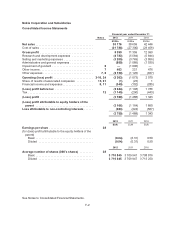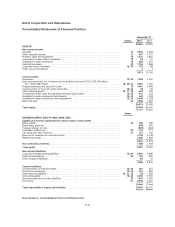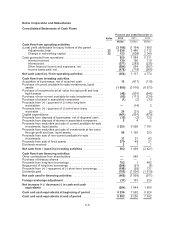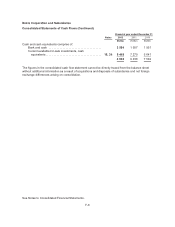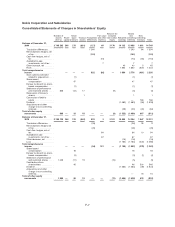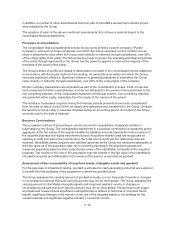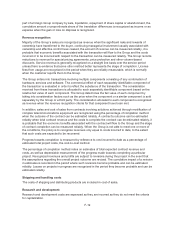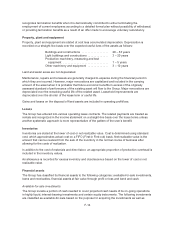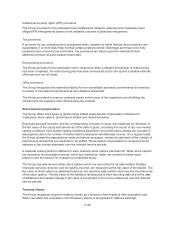Nokia 2012 Annual Report Download - page 212
Download and view the complete annual report
Please find page 212 of the 2012 Nokia annual report below. You can navigate through the pages in the report by either clicking on the pages listed below, or by using the keyword search tool below to find specific information within the annual report.The Group conducts its impairment testing by determining the recoverable amount for the asset or
cash-generating unit. The recoverable amount of an asset or a cash-generating unit is the higher of its
fair value less costs to sell and its value in use. If there is no reason to believe that cash-generating
unit’s value in use materially exceeds its fair value less costs to sell, the Group may use fair value less
costs to sell as its recoverable amount.
Cash-generating unit, as determined for the purposes of the Group’s goodwill impairment testing, is the
smallest group of assets (including goodwill) generating cash inflows that are largely independent of
the cash inflows from other assets or groups of assets. In testing a cash-generating unit for
impairment, the Group identifies all corporate assets that relate to the cash-generating unit under
review and those assets are allocated, on a reasonable and consistent basis, to the relevant units. The
aggregate total carrying amount of the unit, including the portion of the carrying amount of the
corporate assets allocated to the unit, is compared with its recoverable amount. An impairment loss is
recognized if the recoverable amount is less than the carrying amount. Impairment losses are
recognized immediately in the income statement.
Disposals of separate entities or businesses
When a disposal transaction causes the Group to relinquish control over a separate entity or business,
the Group records a gain or loss on disposal at the disposal date. The gain or loss on disposal is
calculated as the difference between the fair value of the consideration received and the carrying
amounts of derecognized net assets attributable to the equity holders of the parent and non-controlling
interests of the disposed entity or business, adjusted by amounts previously recognized in other
comprehensive income in relation to that entity or business.
Foreign currency translation
Functional and presentation currency
The financial statements of all Group companies are measured using functional currency, which is the
currency of the primary economic environment in which each of the companies operate. The
consolidated financial statements are presented in euro, which is the functional and presentation
currency of the Parent Company.
Transactions in foreign currencies
Transactions in foreign currencies are recorded at the rates of exchange prevailing at the dates of the
individual transactions. For practical reasons, a rate that approximates the actual rate at the date of the
transaction is often used. At the end of the accounting period, the unsettled balances on foreign
currency assets and liabilities are valued at the rates of exchange prevailing at the end of the
accounting period. Foreign exchange gains and losses arising from statement of financial position
items are reported in financial income and expenses. Unrealized foreign exchange gains and losses
related to non-current available-for-sale investments are recognized in other comprehensive income.
Foreign Group companies
In the consolidated accounts, all income and expenses of foreign Group companies, where the
functional currency is other than euro, are translated into euro at the average monthly foreign
exchange rates. All assets and liabilities of foreign Group companies are translated into euro at the
year-end foreign exchange rates. Differences resulting from the translation of income and expenses at
the average rate and assets and liabilities at the closing rate are recognized in other comprehensive
income as translation differences within consolidated shareholder’s equity. On the disposal of all or
F-11



